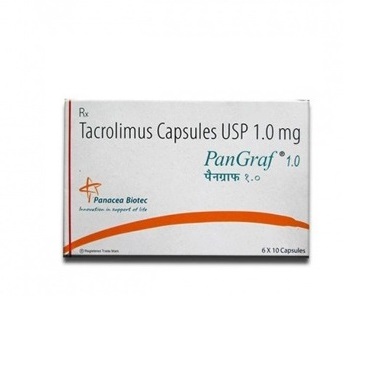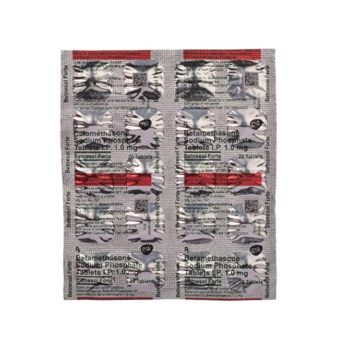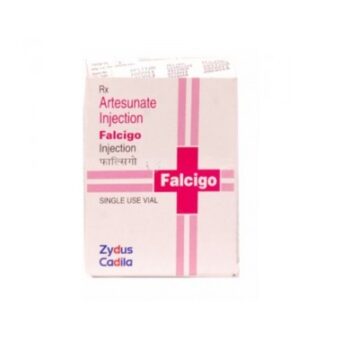Pangraf 1 mg
Pangraf 1 mg is an immunosuppressive medication primarily used to prevent organ rejection in transplant patients. It contains tacrolimus, a drug that works by inhibiting the immune system’s response, preventing it from attacking the newly transplanted organ.
By suppressing immune activity, Pangraf helps reduce the risk of rejection after kidney, liver, or heart transplants. It is typically used in combination with other medications to enhance its effectiveness. Regular monitoring of kidney function and drug levels is required to ensure safety.
Side effects may include tremors, headaches, and high blood pressure, making regular check-ups essential for optimal results.
Uses
- Prevention of Organ Rejection – Primarily used to prevent rejection after organ transplants, such as kidney, liver, or heart transplants.
- Immunosuppressive Therapy – Suppresses the immune system to reduce the likelihood of transplant rejection.
- Autoimmune Diseases – Sometimes prescribed off-label to manage certain autoimmune conditions like lupus or rheumatoid arthritis.
- Combination Therapy – Often used with other immunosuppressive medications to enhance the effectiveness of preventing organ rejection.
How to Use Pangraf 1 mg ?
- Follow Doctor’s Instructions – Always take Pangraf as prescribed by your doctor. The dosage is typically based on your transplant type and condition.
- Take Orally – Swallow the tablet whole with a glass of water. Do not crush or chew the tablet.
- Timing – Take it at the same time every day to maintain consistent levels in the body.
- Empty Stomach – For best absorption, take the medication on an empty stomach, at least 1 hour before or 2 hours after meals.
- Monitor Blood Levels – Regular blood tests will be necessary to ensure the correct drug levels and adjust dosage as needed.
- Avoid Missing Doses – If you miss a dose, take it as soon as possible, unless it’s close to the time for the next dose. Do not double doses.
How Pangraf 1 mg Works ?
Pangraf 1 mg contains tacrolimus, an immunosuppressive drug that works by inhibiting calcineurin, an enzyme crucial for activating T-cells, which are responsible for the body’s immune response. By suppressing T-cell activation, tacrolimus reduces the immune system’s ability to recognize and attack the transplanted organ as foreign, thus preventing organ rejection.
This action helps to maintain a delicate balance where the immune system does not destroy the newly transplanted organ while still providing enough protection against infections. The drug’s immunosuppressive effect is why it’s typically used in combination with other medications to achieve optimal results.
Doses
The dosage of Pangraf (tacrolimus) varies based on the patient’s condition and the type of transplant.
- Initial Dose – For organ transplant patients, the typical initial dose is 0.03 to 0.05 mg/kg/day, usually divided into two doses per day.
- Maintenance Dose – After stabilizing, the dose is typically adjusted to 0.01 to 0.02 mg/kg/day based on blood test results and how well the patient responds to the medication.
- Adjustment – Dosage may be adjusted depending on blood tacrolimus levels to maintain an optimal therapeutic range (usually 5–15 ng/mL for most transplants).
- Kidney Function Monitoring – Regular blood tests to monitor kidney function and tacrolimus levels are necessary to avoid toxicity or underdose.
Benefits of Pangraf 1 mg
- Prevents Organ Rejection – Helps prevent rejection of transplanted organs (kidney, liver, heart) by suppressing the immune response.
- Enhances Transplant Success – Significantly improves the chances of transplant survival by reducing immune attacks on the new organ.
- Reduces Inflammation – Helps control inflammation that could lead to organ damage or rejection.
- Promotes Long-Term Organ Function – Increases the likelihood of long-term success and proper function of transplanted organs.
- Combines with Other Medications – Works effectively alongside other immunosuppressants for optimal transplant management.
Side Effects of Pangraf 1 mg
- Kidney Problems – Tacrolimus can affect kidney function, leading to kidney toxicity or impairment.
- Tremors – Fine hand tremors are a common side effect.
- High Blood Pressure – Elevated blood pressure may occur in some patients.
- Headaches – Some individuals experience headaches during treatment.
- Gastrointestinal Issues – Nausea, vomiting, diarrhea, or constipation can occur.
- Increased Risk of Infection – As an immunosuppressant, Pangraf lowers the body’s ability to fight infections.
- Elevated Blood Sugar – May cause or worsen diabetes in some patients.
- Fatigue – Some people feel unusually tired or weak.
- Skin Changes – Risk of developing skin rash, acne, or increased hair growth.
Precautions
- Regular Monitoring – Frequent blood tests to monitor tacrolimus levels and kidney function are essential to avoid toxicity and ensure effective dosing.
- Avoid Infections – Since Pangraf suppresses the immune system, avoid contact with people who have infections, and practice good hygiene to reduce infection risks.
- High Blood Pressure – Monitor blood pressure regularly, as tacrolimus can cause or worsen hypertension.
- Kidney Health – Use with caution in patients with pre-existing kidney problems; kidney function should be closely monitored.
- Sun Sensitivity – Avoid excessive sun exposure and use sunscreen, as tacrolimus can increase skin sensitivity to the sun.
- Pregnancy and Breastfeeding – Consult your doctor before using Pangraf during pregnancy or breastfeeding, as it can harm the fetus or infant.
- Drug Interactions – Inform your doctor of all medications you are taking, as Pangraf can interact with many drugs, including other immunosuppressants, antibiotics, and antifungals.
- Avoid Grapefruit – Grapefruit and grapefruit juice can increase tacrolimus levels, leading to potential toxicity, so avoid consuming them.
- Alcohol Use – Limit alcohol intake, as it may exacerbate side effects like liver problems.
Frequently asked question
What is Pangraf 1 mg used for?
Pangraf 1 mg is an immunosuppressive medication used primarily to prevent organ rejection after transplants, such as kidney, liver, or heart transplants.
How does Pangraf work?
Pangraf contains tacrolimus, which suppresses the immune system by inhibiting T-cell activation, thus preventing the immune system from attacking the transplanted organ.
How should I take Pangraf?
Take Pangraf orally, typically twice a day, as directed by your doctor. It is best taken on an empty stomach for optimal absorption.
What are the side effects of Pangraf?
Side effects may include kidney problems, tremors, high blood pressure, headaches, gastrointestinal issues, and increased infection risk.
Can Pangraf be used during pregnancy?
Consult your doctor before using Pangraf during pregnancy, as it may harm the fetus. It should only be used if the benefits outweigh the risks.
How often should I have blood tests while on Pangraf?
Regular blood tests are required to monitor tacrolimus levels and kidney function. Your doctor will determine the appropriate schedule based on your treatment plan.
Can I take other medications with Pangraf?
Pangraf can interact with many other medications. Always inform your doctor about all drugs you are taking to avoid harmful interactions.
Is Pangraf safe for long-term use?
When monitored regularly and taken as prescribed, Pangraf is generally safe for long-term use in transplant patients. Regular check-ups are essential to manage side effects.
Conclusion
Pangraf 1 mg is an essential immunosuppressive medication for preventing organ rejection after transplants, ensuring long-term success and survival of the transplanted organ.
While it provides significant benefits, including immune suppression and reduced rejection risk, regular monitoring is crucial due to potential side effects like kidney issues and infections.
By following prescribed dosages and guidelines, patients can achieve optimal outcomes while minimizing risks.












Reviews
There are no reviews yet.